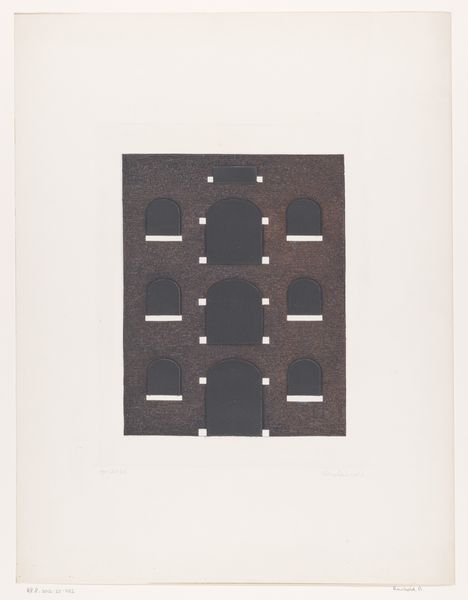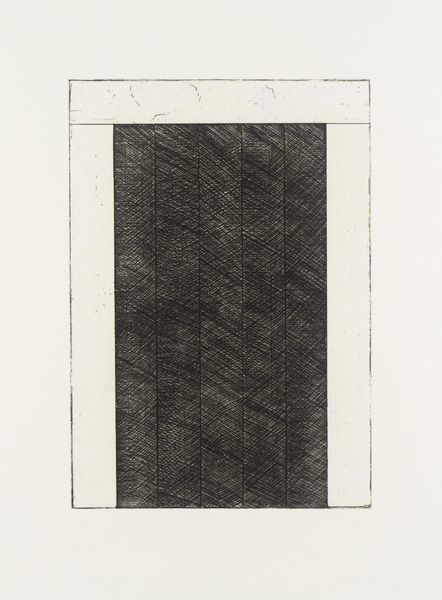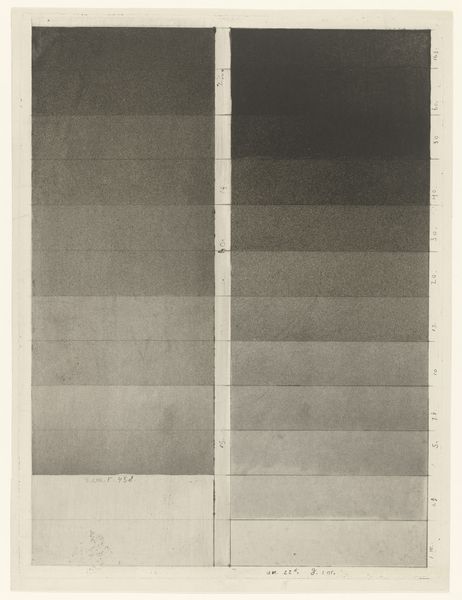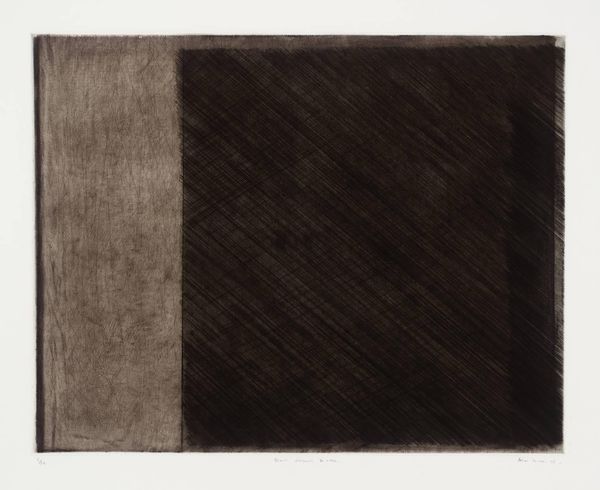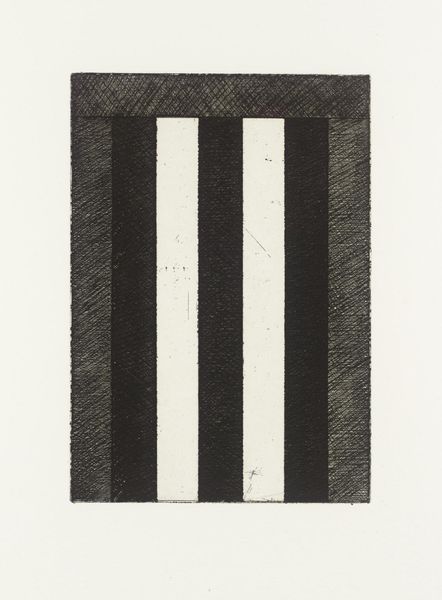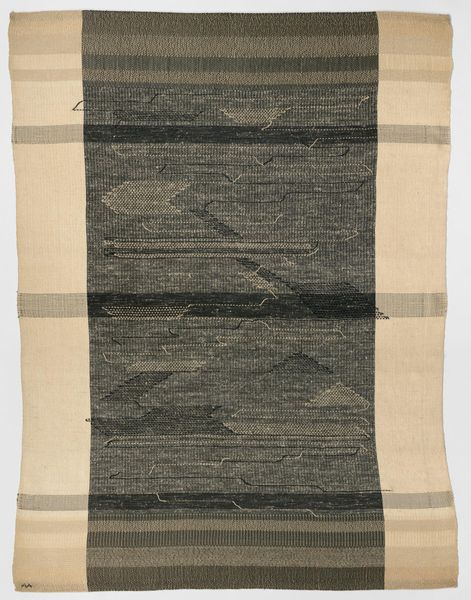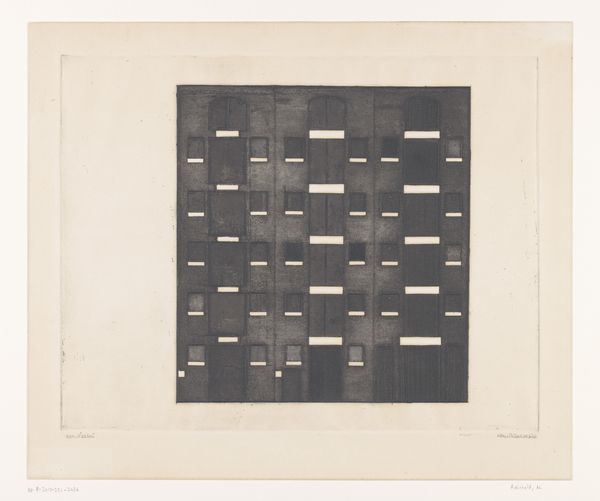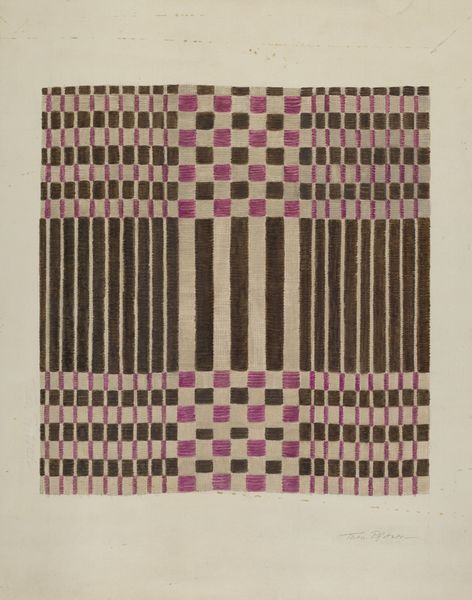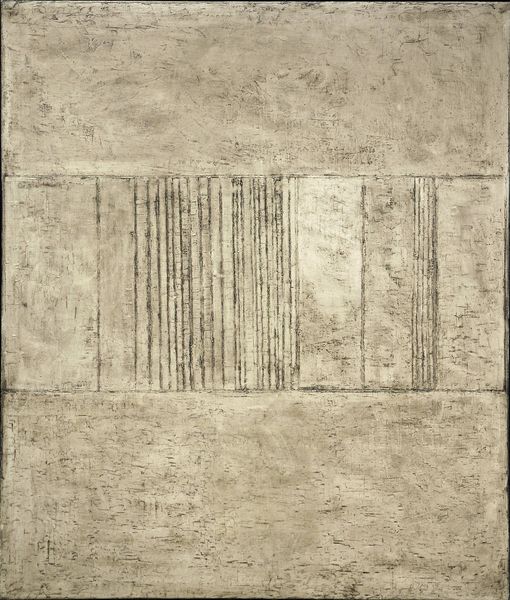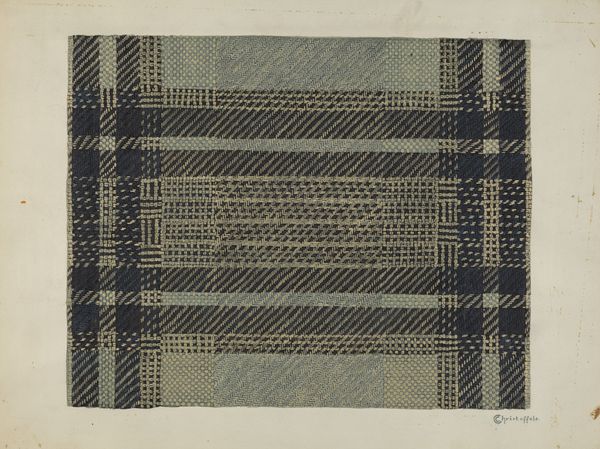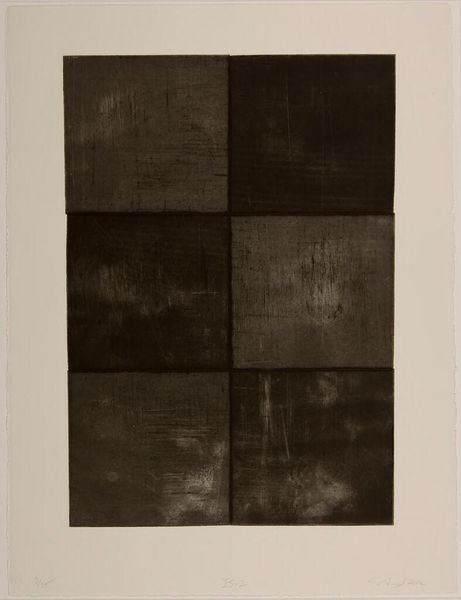
Vloerkleed van wol in bruin en twee tinten beige, met een patroon van geometrische strepen en een kruis in het midden. c. 1925
0:00
0:00
weaving, textile
#
art-deco
#
pattern
#
weaving
#
textile
#
geometric
#
abstraction
Dimensions: length 347 cm, width 252 cm
Copyright: Rijks Museum: Open Domain
This wool rug with geometric patterns was produced by the Koninklijke Verenigde Tapijtfabrieken, although the exact date is unknown. The simple design is reminiscent of early modernist movements such as De Stijl in the Netherlands, or the Bauhaus in Germany. These movements sought to integrate art and design with industrial production, with the goal of creating functional objects for everyday use. As such, we might consider what role the Koninklijke Verenigde Tapijtfabrieken played in bringing modern design to a wider public, as a commercial entity influenced by avant-garde ideals. The rug’s design features a central cross shape, combined with geometric lines and a limited color palette. The choice of these visual elements can be interpreted as a reflection of a broader cultural shift towards simplicity, abstraction, and functionality. Art history involves understanding not just the artwork itself, but also the social and institutional contexts in which it was produced and consumed. By exploring the archives of design companies and researching the cultural trends of the time, we can gain a deeper understanding of the rug's significance and meaning.
Comments
No comments
Be the first to comment and join the conversation on the ultimate creative platform.
